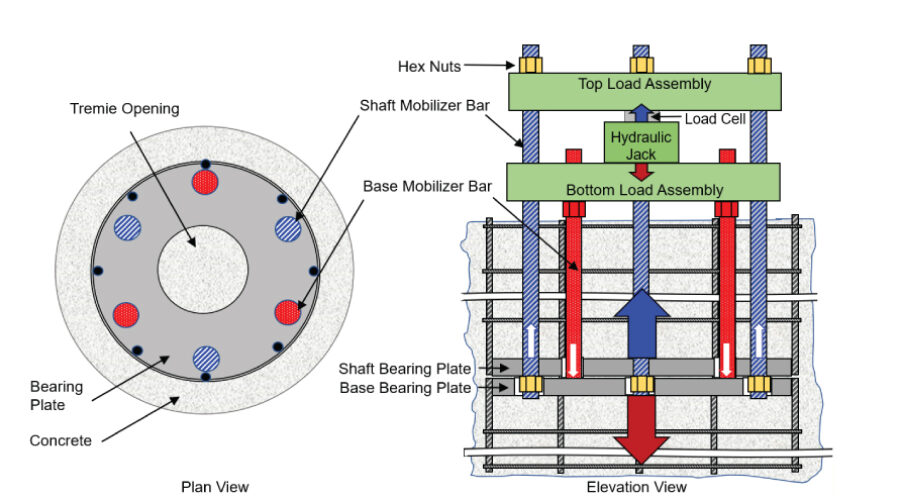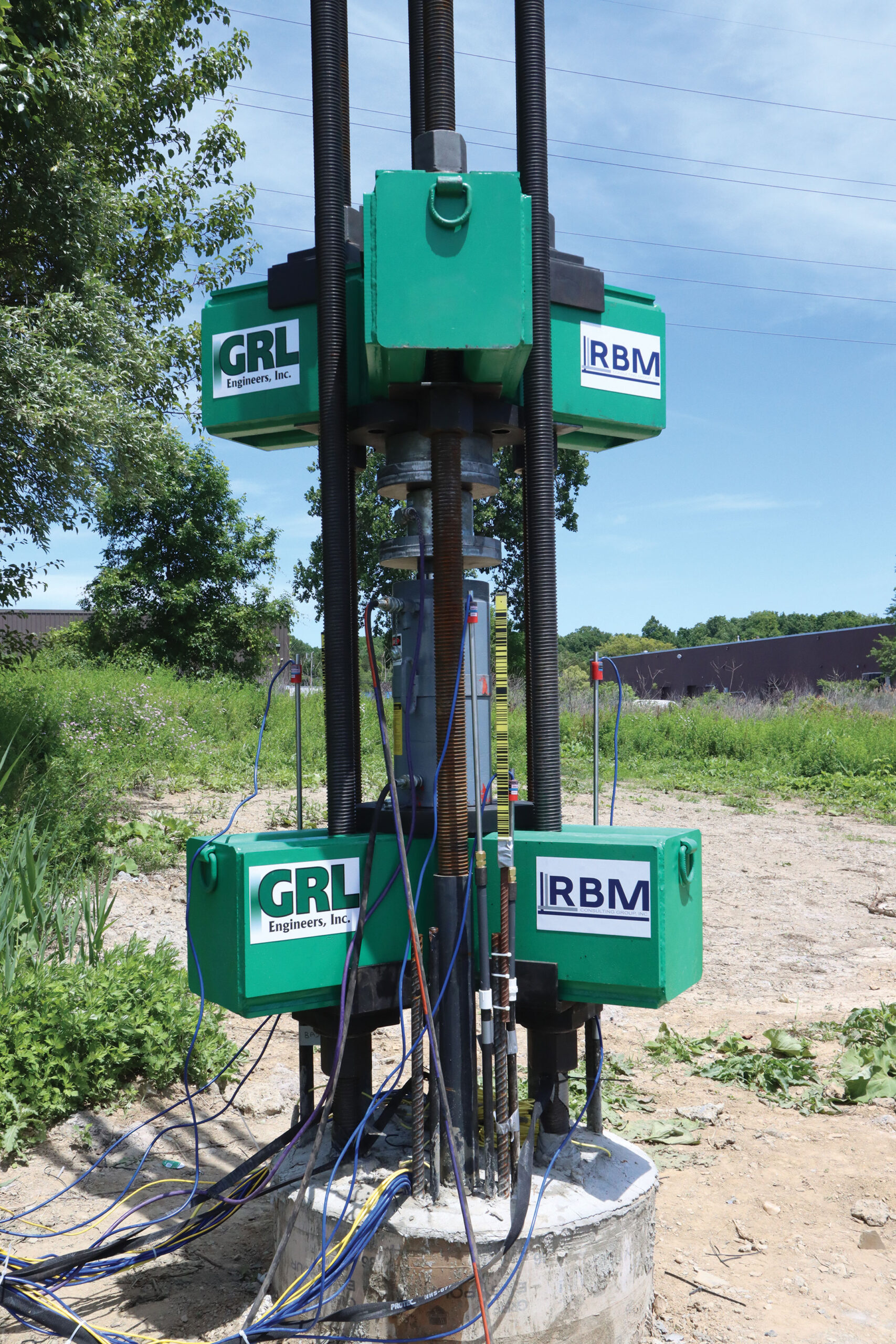Top Loaded Bi-Directional Testing (TLBT)
Top Loaded Bi-Directional Testing (TLBT)
Top Loaded Bi-Directional Testing offers a patented method to perform a bi-directional load test without embedding a sacrificial jack in the foundation element. The above grade, reusable jack reacts against a reusable load assembly connected to embedded bearing plates using shaft mobilizer and base mobilizer bars. Test instrumentation for determining bearing plate movements and load transfer behavior is similar to a conventional bi-directional test. A generalized schematic of the TLBT method is shown below. Additional details can be found in the linked US patent (US No. 11,060,947).
The shaft bearing plate pushes upward against the shaft resistance on the portion of the foundation element above the bearing plate location. At the same time, the base bearing plate pushes downward against its shaft resistance below the base bearing plate, as well as against the foundation’s toe or base resistance. Shaft and toe movements as well as embedded strain gage instrumentation are monitored for each applied load. An estimated top load-movement curve is constructed from the measured shaft resistance load-movement and base resistance load-movement responses.
Top Loaded Bi-Directional Testing Benefits include:
- Bi-directional load test performed with re-useable components including hydraulic jack, top and bottom load assemblies, and shaft and base mobilizer bars.
- Improved constructability and reduced risk of damage by removing loading source and hydraulic lines from within deep foundation element.
- Load test method well suited to lightly to moderately loaded drilled shafts, bored piles, and ACIP/CFA piles.
- Separates soil/rock resistance and movement data for shaft and toe.
- Determines magnitude of the mobilized shaft and toe resistances.
- Embedded strain gauges within the foundation determine the soil/rock resistance distribution along the foundation length for optimizing the foundation design.


